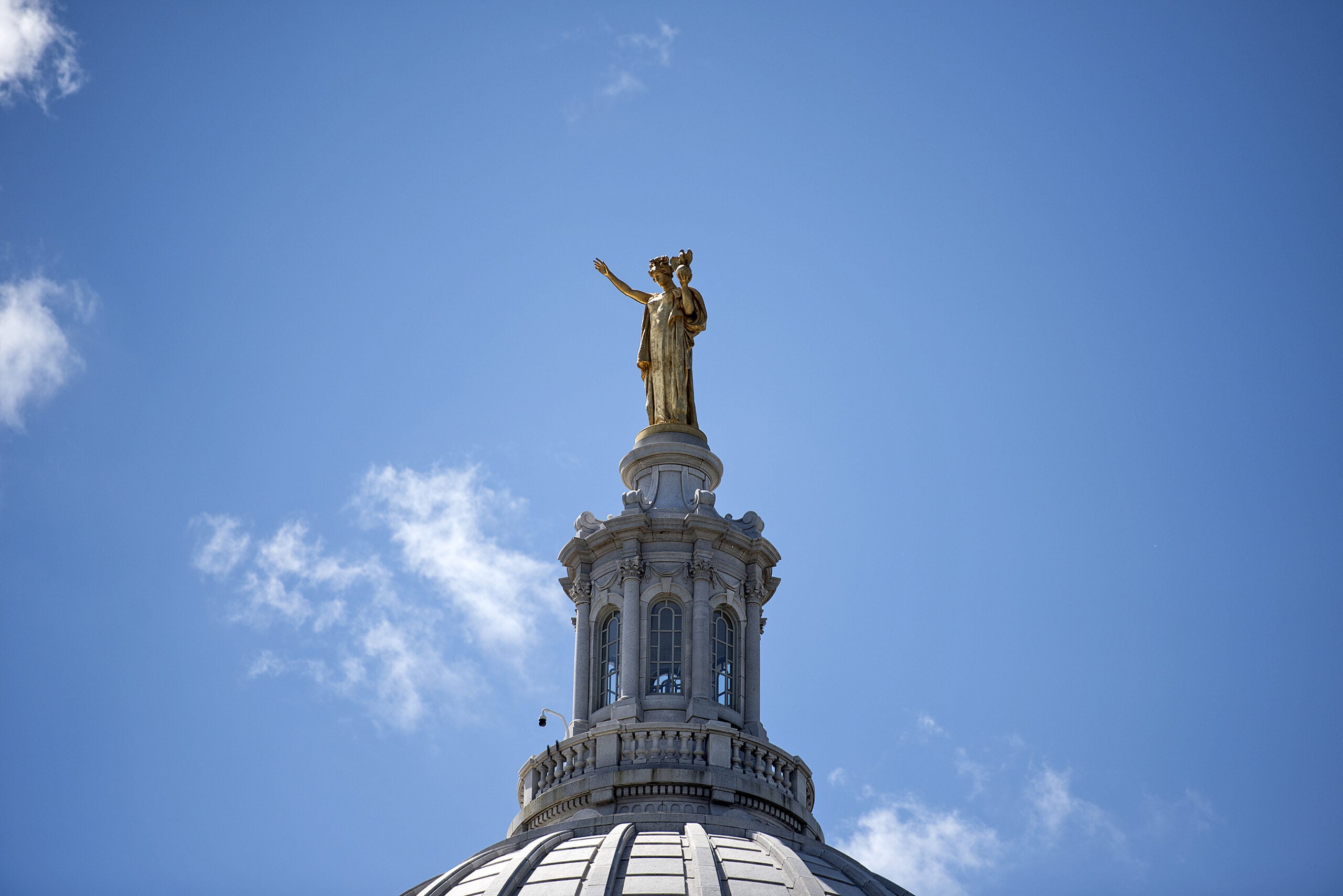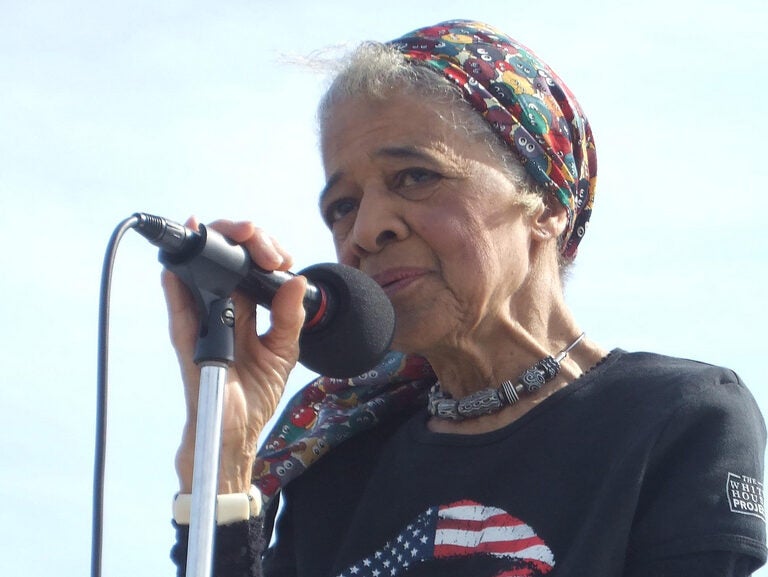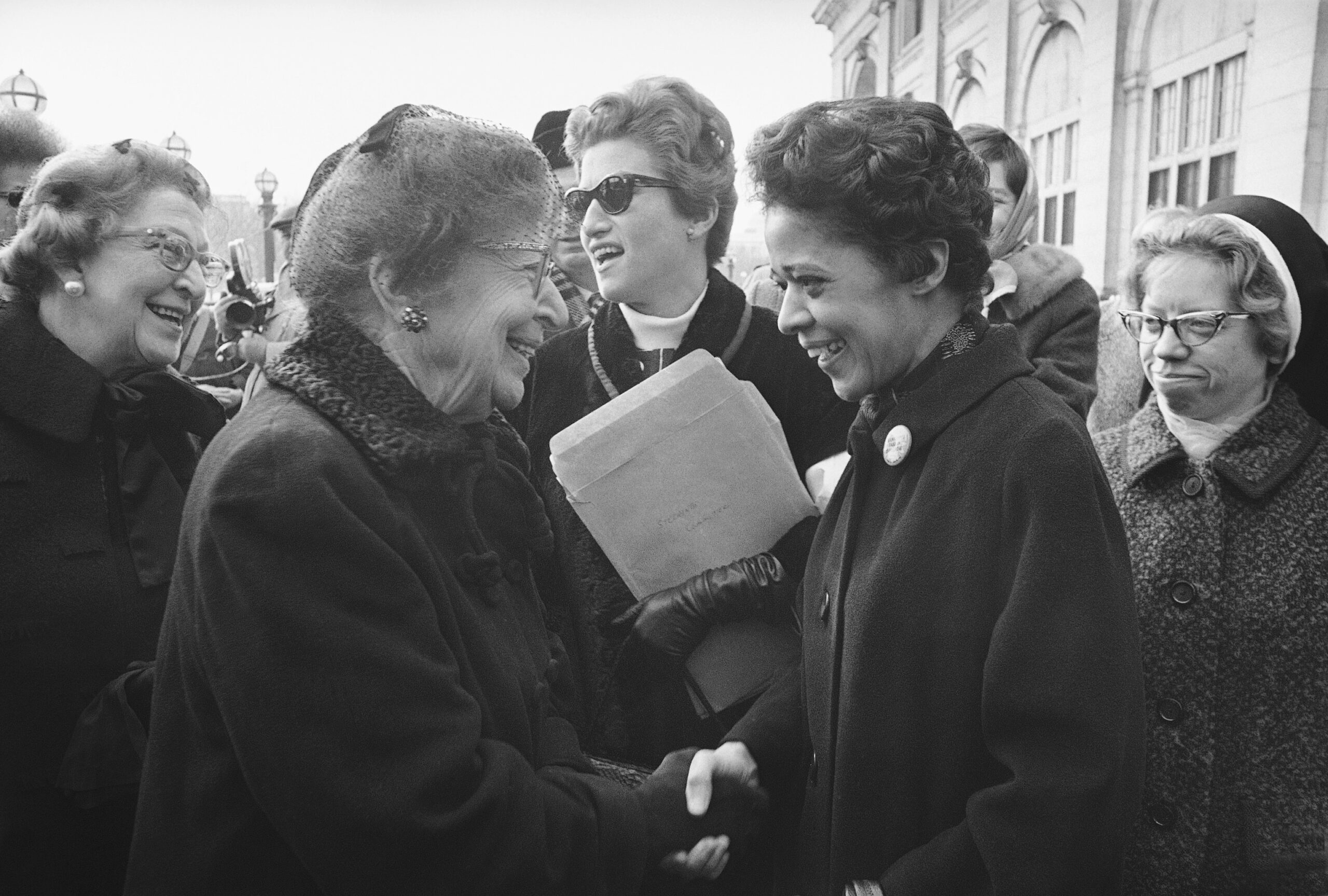A statue of the first Black woman elected to statewide office in Wisconsin may soon be added to the state Capitol grounds, joining a rare anthology of statues nationwide that portray real women throughout American history.
About 6 percent of all public monuments portray an actual woman from history, according to research by Sierra Rooney, an assistant professor of Art History at the University of Wisconsin-La Crosse. In 2021, one survey found more public monuments depicting mermaids than any single woman from history.
“I think including women, people of color, who we do not historically see on these pedestals, it can spur us to look at this history because monuments represent our values,” Rooney said. “When we build a monument, we are giving people of the future tangible, visible clues about what we value.”
News with a little more humanity
WPR’s “Wisconsin Today” newsletter keeps you connected to the state you love without feeling overwhelmed. No paywall. No agenda. No corporate filter.
Rooney recently appeared on Wisconsin Public Radio’s “The Morning Show” to discuss how women are represented in monuments as the Capitol nears installing a statue of Vel Phillips, who served as secretary of state from 1979 to 1983.
While authorities approved plans in 2021 to construct a monument to Phillips, the timeline for its installation remains undetermined, according to a state Department of Administration spokesperson.
This interview has been edited for clarity and brevity.
Kate Archer Kent: Your research says 6 percent of public monuments throughout our country portray an actual woman in history, a woman with a name. Why are so few women on pedestals?
Sierra Rooney: Isn’t that a shocking number? It’s incredibly low. It has to do with the history of who we have considered heroes. And for most of American history, that has been men.
If you walk around basically any city or town in the country there are public monuments. And it could leave the impression that American history is basically all men on horses. One could really wonder whether there were any noteworthy women in history because so few were commemorated in public spaces.
Part of that is because women just have not had an avenue to ascend that plinth. We have commemorated presidents and military heroes and explorers, and women were not allowed to participate in those professions.
KAK: Was there a golden age for statue building that is maybe now behind us as a society?
SR: That’s considered the 19th Century. That’s where we see the most frenzy in monument building. It’s actually a period called “Monument Mania.” Most of the historic monuments we have — men on horseback — it’s probably from this period.
KAK: Is the gender gap for monuments changing over time as we’ve come out of that period and are now living in a very different era?
SR: It is changing, albeit very slowly. It’s not like painting on a canvas where somebody could do it alone in their studio. There are a lot of voices.
It also costs a lot of money. To put a monument in public space, as we’re seeing with the Vel Phillips statue, it can take years, sometimes even decades. That’s why it has been taking so long to get more monuments to women.
There are a few really notable initiatives within the last few years in order to lower that gender gap. A really good example, perhaps the most expansive example, is an initiative called “She Built NYC.” It has received $10 million in city funds, which is pretty remarkable, to commission new public artworks honoring women that were important to New York City.
READ MORE: Wisconsin Capitol statue of civil rights, political icon Vel Phillips moves forward
KAK: I wonder why statues depicting women often don’t have names like the Statue of Liberty or Lady Forward. Why are they symbols instead of named people?
SR: There are a lot of figures of women in our public art collections throughout the country but they’re represented as these allegorical figures. The Statue of Liberty is not actually a woman named “Liberty.”
Women’s bodies were used to embody these larger ideals or values. Sometimes, they were corollaries or secondary figures to male, historic figures. There’ll be a statue of a general on horseback and a figure of a woman next to him representing victory.
When we do see women, especially from this “Monument Mania” period, she is more likely going to be an allegory as opposed to a real, historic woman.
KAK: The Boston Women’s Memorial depicts three women at ground level, not on pedestals. What can the placement of figures say to people?
SR: When we think of a typical monument, we think of a large bronze or marble statue on a pedestal. And this is actually rooted in authoritarian history. We go all the way back to ancient Rome and statues serve this imperialist agenda as leaders would literally send portraits of themselves across colonies to express their authority and power. This has really served as the model of monuments for thousands of years.
This is really at odds with the more contemporary democratic ideas of public art, that public art should be more participatory, more engaged with audiences and communities. Part of what I want to encourage new monument builders to think about is to rethink not only who is being honored but the ways in which they are being honored. So why don’t we bring these figures down from pedestals? Maybe it shouldn’t be a single statue we look up to but something we are engaged with, that we walk through.
You mentioned the Boston Women’s Memorial, which is maybe my favorite monument. It’s Abigail Adams, Lucy Stone and Phillis Wheatley. Already, it’s reimagining what a monument can look like, because it’s not an individual person but a collective group. It’s implicitly telling us this idea that history is not made by individual heroes but collective action over the course of decades.
Wisconsin Public Radio, © Copyright 2026, Board of Regents of the University of Wisconsin System and Wisconsin Educational Communications Board.



